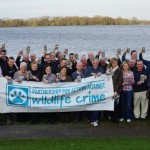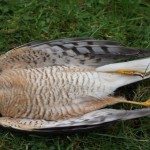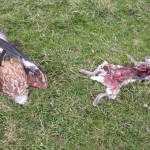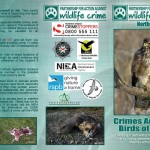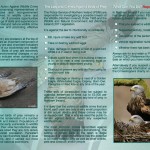Uncategorized
HEN HARRIER DAY NI 2016
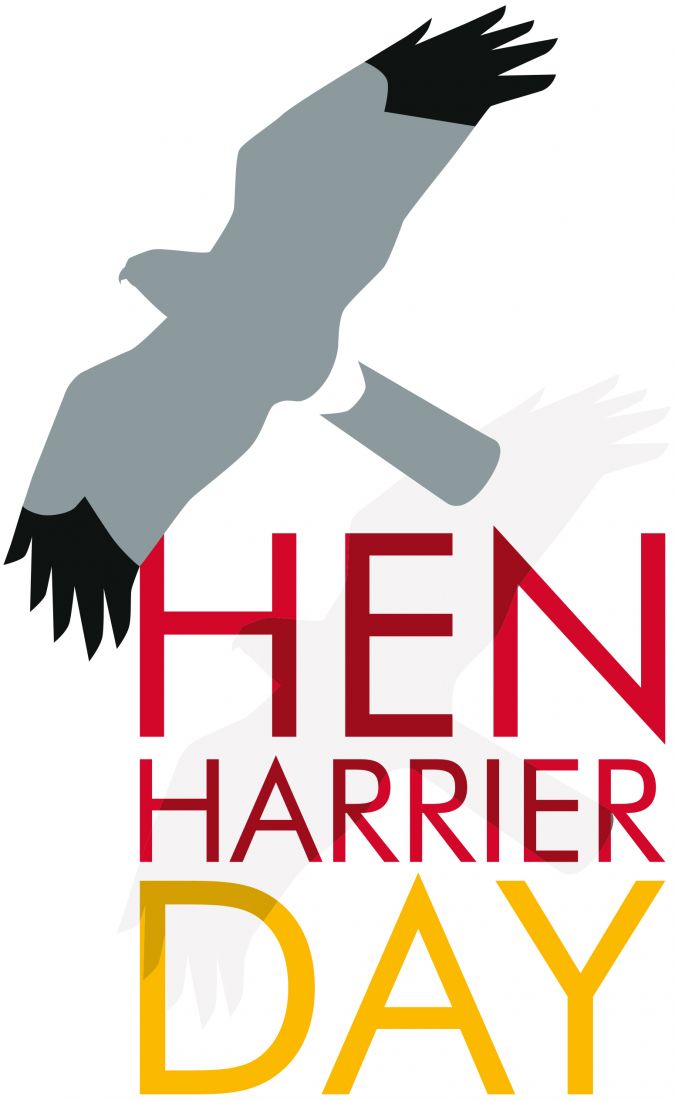 Across the UK and further afield hen harriers are considered to be missing from suitable habitat due to multiple threats and in particular as a direct result of persecution.
Across the UK and further afield hen harriers are considered to be missing from suitable habitat due to multiple threats and in particular as a direct result of persecution.
Birders Against Wildlife Crime (BAWC) coordinated ‘Hen Harrier Day’ in a bid to celebrate this wonderful raptor species and raise awareness of the plight of the hen harrier and to encourage people to make their voices heard. Hen Harrier Day aims to show those who continue to persecute hen harriers, and other raptor species, that it will not be tolerated.
In Northern Ireland & the Republic of Ireland our hen harriers are not known to be as heavily persecuted as those in Britain, it has nonetheless been recorded. However localised disturbance issues, predation, food availability and wide-scale habitat factors may also be having an impact on the numbers and breeding success of harriers locally. The population here has declined over time and there appears to be far fewer chicks fledging in recent years.
As fewer chicks are produced to enter the breeding population we may see population numbers reduce further. Our hen harrier population also depends on birds coming in from Britain to join our population and if hen harriers are reduced or disappear from Britain then it may directly impact on our birds too.
The NIRSG hosted two Hen Harrier Day events in Northern Ireland on behalf of BAWC on Saturday 6th August 2016 as part of celebrations across the UK. Alan Ferguson, volunteer with NIRSG, says ‘Although this is the third Hen Harrier Day it is the first time NIRSG have hosted an event. We want to raise the profile of the issues surrounding the decline of hen harriers and we had a good turnout for our first day. Our native wildlife should be allowed to thrive so everyone can enjoy it. We are so grateful to everybody who joined us on Saturday 6th August to ‘Make a Stand for Hen Harriers’.
Phil Walton from BAWC says “The first Hen Harrier Day in 2014 was a collaboration between BAWC, Mark Avery and Chris Packham to raise awareness of the plight of these iconic birds of prey. Despite full legal protection since the early 1950s, Hen Harriers remain absent from vast swathes of the UK uplands. They are now almost extinct as a breeding species in England, primarily because of illegal persecution. Hen Harrier Day is now an annual fixture, growing from three main events just two years ago to 12 this year. The support we have received from the Northern Ireland Raptor Study Group has been fantastic. For them to have two events organised in their first year of participation is a great achievement.”
The events were open to everyone and offer a chance to show our solidarity for all hen harrier populations in the UK & Ireland, celebrate that we have this wonderful raptor in our uplands and show the wider public that we are not afraid to speak out and that we will not tolerate persecution.
Saturday 6th August 2016 saw Hen Harrier Day celebrations take place at Glenarriff Forest Park, Co. Antrim in the morning and Castle Archdale Country Park, Co. Fermanagh in the afternoon. Dozens of people joined us and made banners and posters to join in the celebration. We thank all those who helped in organising the event and particularly those who attended.
We all had a fantastic day celebrating the Hen Harrier – the Sky Dancer.
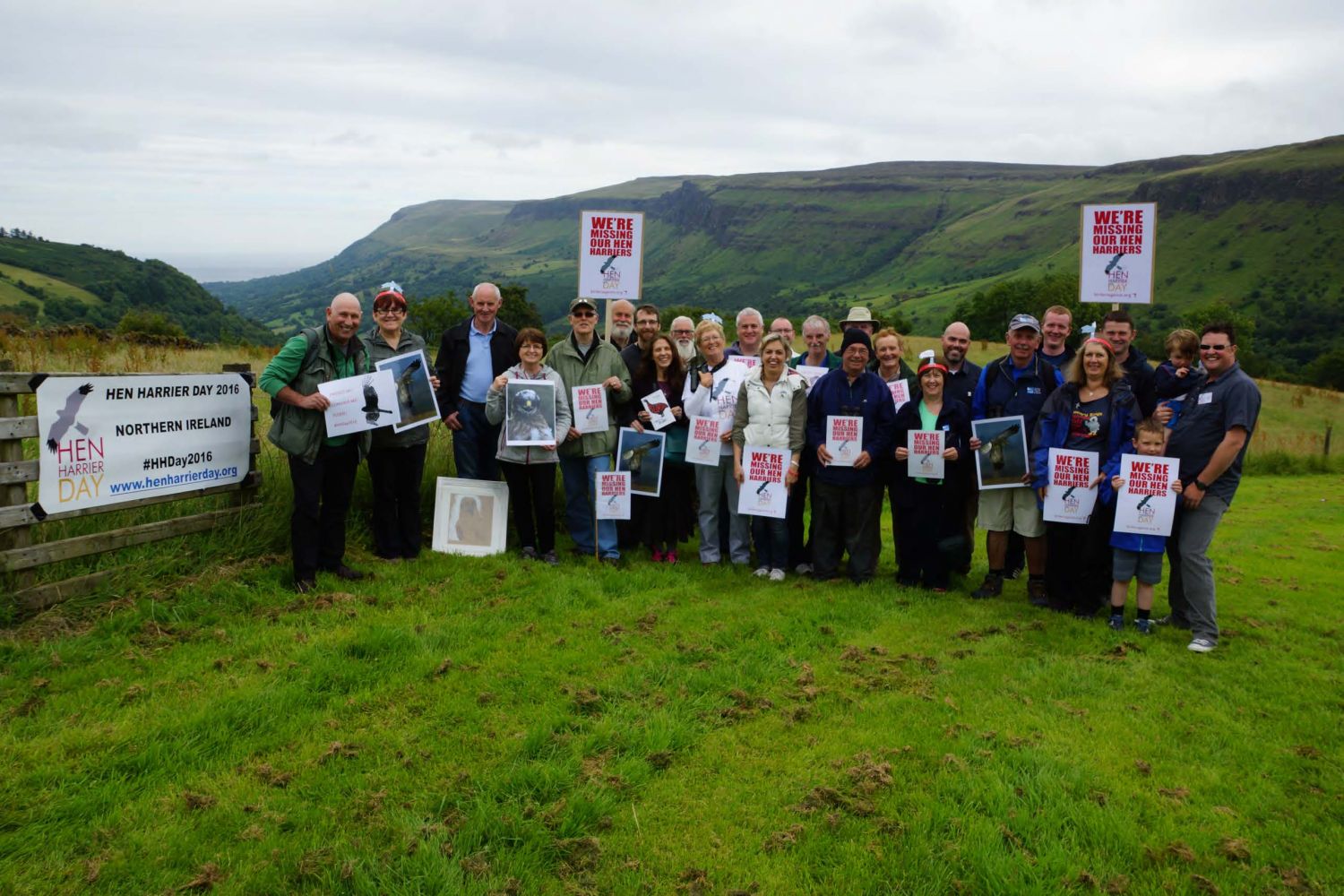
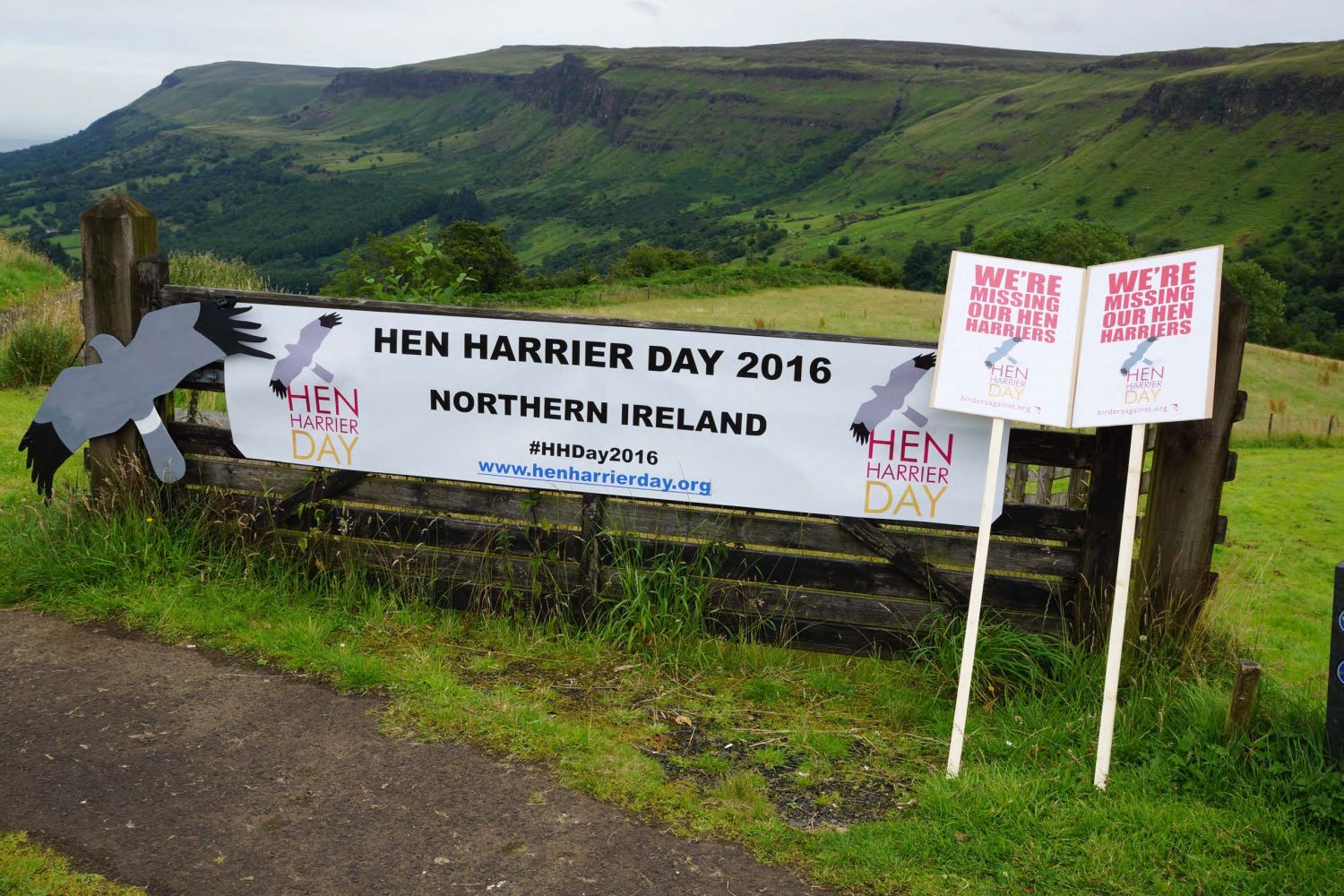
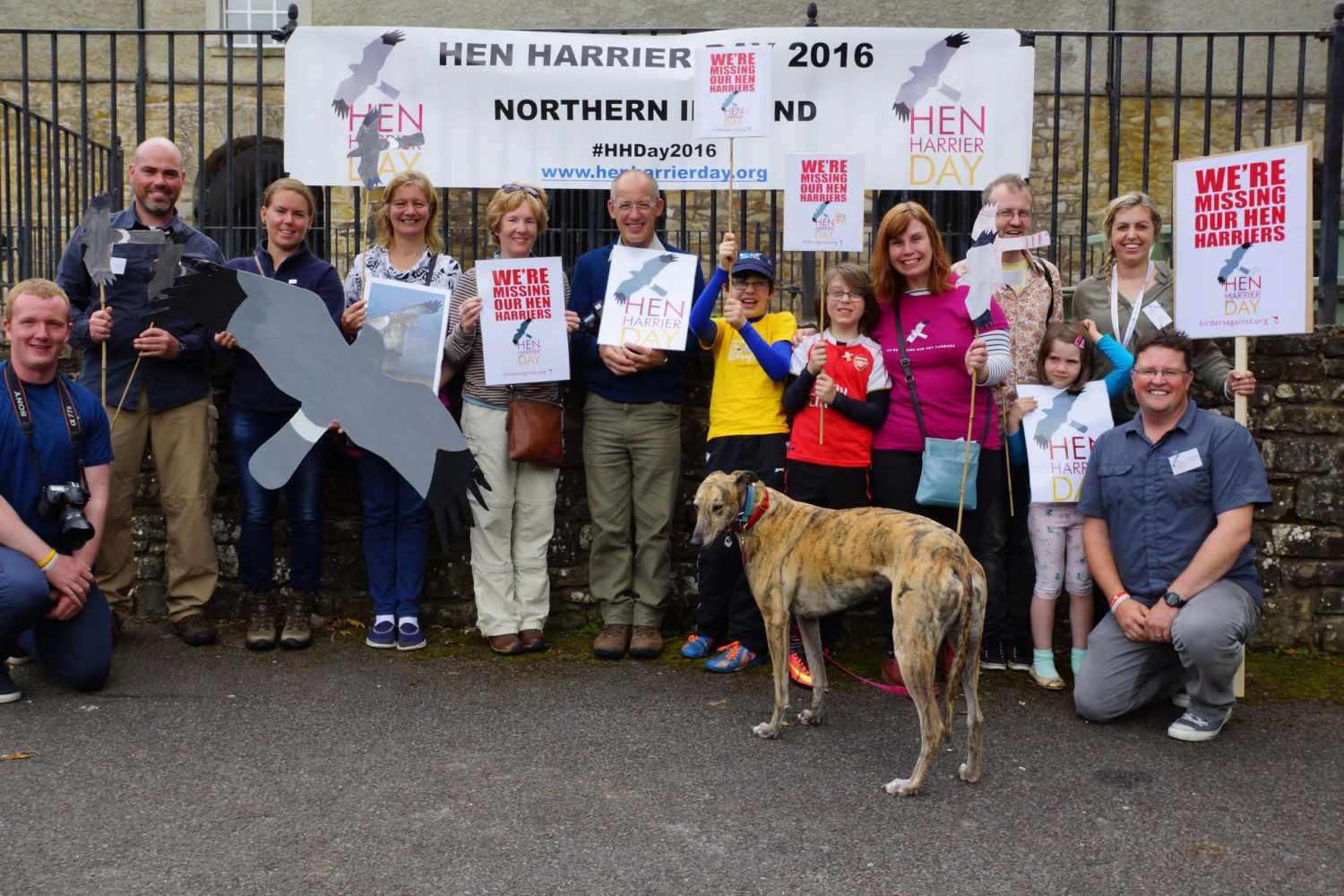
Bird Of Prey Disturbance & Legislation
During the breeding season many animals defend their territories and breeding sites from potential danger and birds of prey are no exception. Birds of prey will ‘alarm call’ at any perceived threat that comes too close to the nest site. On rarer occasions they may dive at the threat if it persists. This is a natural response which can be observed by many different types of wildlife. For example, many of us are familiar with being ‘dive-bombed’ by gulls.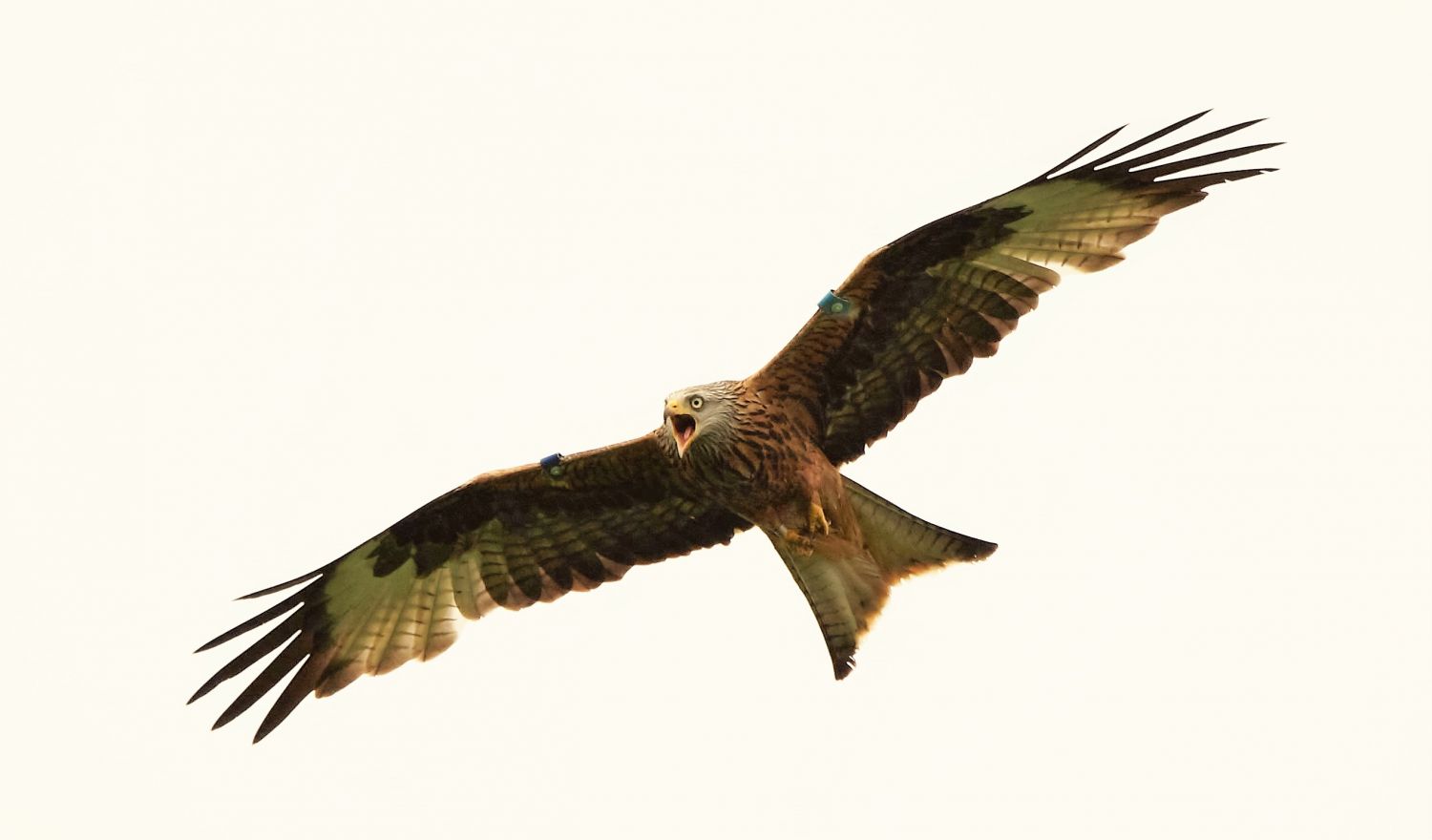
Alarm-calling is usually enough to deter the threat, but for those of us who are not familiar with the sounds of birds of prey may not realise what is happening and continue merrily on our way, getting closer and closer to the nest.
It is rare for a bird to actually make contact but some individual birds are more aggressive, and if frequently disturbed, it may happen. NIRSG get a few reports of these sorts of responses every year. To the nesting bird you are no different from the threat posed by a fox or another bird of prey.
Regular disturbance of a nest site can result in the adults not being able to incubate their eggs efficiently, causing the chicks inside to die, or later in the season defending their nest site from disturbance can distract the adults from hunting or caring for the young and as a result the chicks in the nest may starve. For this reason it is illegal under the wildlife legislation to recklessly disturb ANY bird during the nesting season.
It is best that people stay clear of nesting areas, unless you have wildlife licence, where possible until the breeding season is over, typically around the end of July. We understand that people may be oblivious to the early warning signs that they are approaching an active nest site and it is good to remain vigilant and use your eyes and ears when out and about, particularly if you hear a bird calling repeatedly in the area.
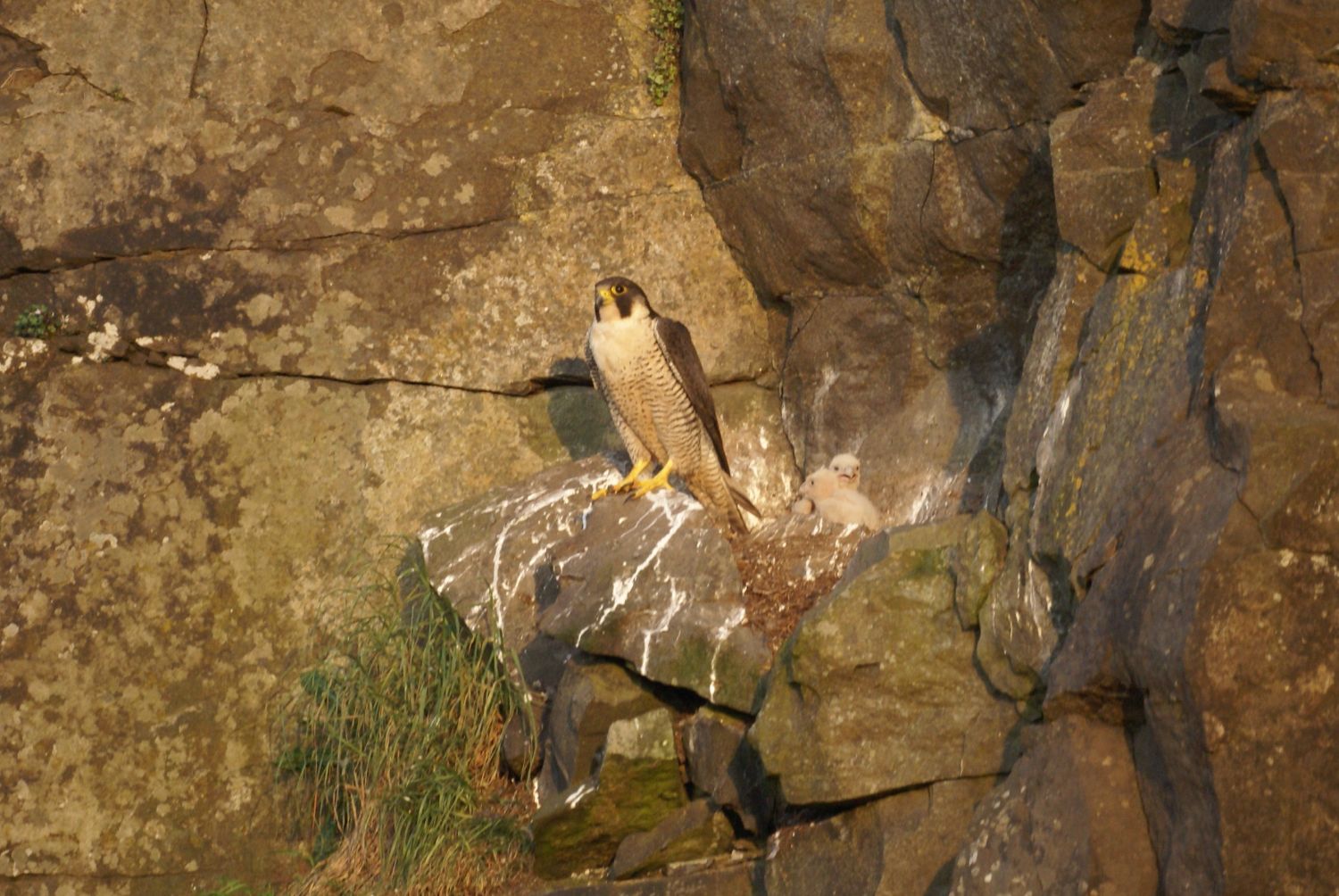 Birds of prey in Northern Ireland are protected all year under the Wildlife (Northern Ireland) Order 1985, as amended by the Wildlife and Environment Act (NI) 2011 and it is illegal to disturb them at, in, on or near their nests. There is a reason for this. Birds of prey sit at the top of their food chain and as a result they are very sensitive to changes in the environment. This leaves each individual very vulnerable and populations can become unstable. The success of their breeding attempts can be affected by disturbance, with eggs and chicks at risk from chilling, predation and starvation when the adults are responding to perceived threats. One or two successive poor breeding years is enough to cause radical declines in some species.
Birds of prey in Northern Ireland are protected all year under the Wildlife (Northern Ireland) Order 1985, as amended by the Wildlife and Environment Act (NI) 2011 and it is illegal to disturb them at, in, on or near their nests. There is a reason for this. Birds of prey sit at the top of their food chain and as a result they are very sensitive to changes in the environment. This leaves each individual very vulnerable and populations can become unstable. The success of their breeding attempts can be affected by disturbance, with eggs and chicks at risk from chilling, predation and starvation when the adults are responding to perceived threats. One or two successive poor breeding years is enough to cause radical declines in some species.
What can you do?
If you are aware of a bird of prey calling when you are out and about, take a few seconds to think, ‘Am I disturbing this bird and could it be calling at me?’ If so, please find an alternative route for the next number of weeks – most bird of prey chicks will have left the nest by the end of July and after this time the defensive behaviour of the adults will lessen.
You can share information about where you are witnessing this protective behaviour and ask other people to avoid the area until the end of the breeding season.
Finally, if you witness any bird of prey being antagonised or disturbed you can call PSNI on ‘101’ or anonymously at Crimestoppers ‘0800 555 111’. This disturbance is, after all, a crime, and should be reported.
Further information
Raptor crimes often comprise illegal shooting, trapping or poisoning events and may occur at any time of the year. It is also illegal to cause disturbance to all raptors or damage their nests or eggs. Wildlife legislation, namely the Wildlife (Northern Ireland) Order 1985 as amended by the Wildlife and Natural Environment (NI) Act 2011 protects birds of prey from disturbance and/or destruction by special penalties. Penalties can include a custodial sentence and/or up to a £5,000 fine per offence.
All raptors are listed on Schedule 1 of the order and there are six raptor species which receive additional protection on Schedule A1 which protects them and their nests from disturbance or destruction at all times of the year. Schedule A1 includes peregrine falcon, red kite, barn owl, golden eagle white-tailed eagle and osprey.
In the spring of 2014, the PAWNI Raptor Priority Sub-Group produced an information leaflet on raptor crime detection and reporting in Northern Ireland which can be downloaded here: https://www.nirsg.com/wp-content/uploads/2014/02/PAWNI-Raptor-Crime-Leaflet.pdf
Police raise concerns after 3 birds found to have been poisoned
Police have raised concerns after three birds of prey (1 Peregrine Falcon and 2 Buzzards) were found dead recently. Following further testing it has been established that two of these birds died linked to Carbofuran poisoning and one found with Alpha chloralose poisoning.
A Peregrine Falcon was found dead at a quarry on the Glenhead Road in Ballymena on April 11th where a Peregrine Falcon was found shot dead in the same area back in 2012 and therefore PSNI requested the poison tests to be expedited.
A Buzzard was found dead at a forest in the Glenarm area on March 15th. Both birds were tested to determine the cause of death and it has been determined that both birds were subject to Carbofuran poisoning.
A third bird (Buzzard) was also reported dead on March 29th also near Glenarm and tests have shown it was exposed to Alphachloralose.
PSNI Wildlife Liaison Officer, Emma Meredith, said, “Poisons can have serious implications and reports such as this give rise to serious concerns. Poison generally is very dangerous and we would have particular concern over any poison but particularly over Carbofuran. We are disappointed that this continues to happen especially with such a dangerous substance, which could kill not only birds of prey but also, a child, family pet or any adult coming into contact with it. We would remind the public if there is a suspicion on any bird of prey to leave the bird/s and/or bait in situ and call the PSNI as soon as possible.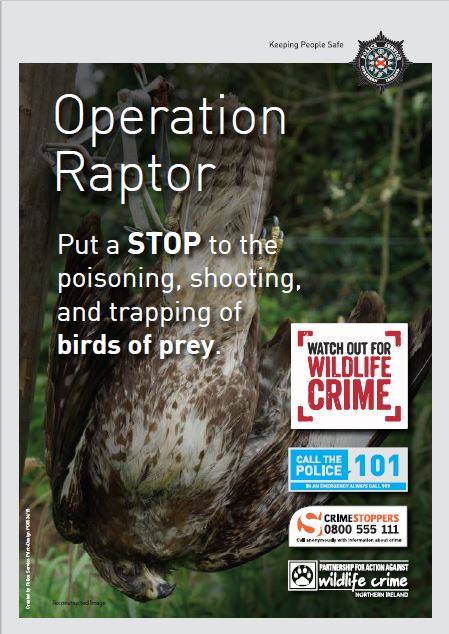
“If anyone has information about the death of these protected birds then we would be really keen to hear from you. The person responsible needs to be identified before other wildlife, domestic pets, or even humans come to harm.
“The PSNI, along with partner agencies (Agri-food and Biosciences Institute, Health and Safety Executive, National Wildlife Crime Unit, Northern Ireland Environment Agency, Northern Ireland Raptor Study Group, Royal Society for Protection of Birds), have been involved in the launch of Operation Raptor, designed to raise the profile of killing of birds of prey and to highlight known “hot spot” areas to combat this type of crime.
The Operation Raptor campaign was launched in March 2016 is designed to encourage members of the public to report to PSNI and also to warn offenders they could face a custodial sentence and/or fine (up to £5,000) if they are caught targeting birds of prey through poisoning, shooting or trapping.”
Anyone with information can contact police on the non-emergency number 101 or anonymously via Crimestoppers on 0800 555 111.
Peregrine falcon found dead in Glenwherry Co. Antrim
A peregrine falcon has been found dead in Glenwherry, Co. Antrim, in Northern Ireland, in the exact same location that a young peregrine was found shot in 2012. The peregrine was discovered on 11th April 2016 and was sent to AFBI for post-mortem. It is strongly suspected that the peregrine has been illegally killed.
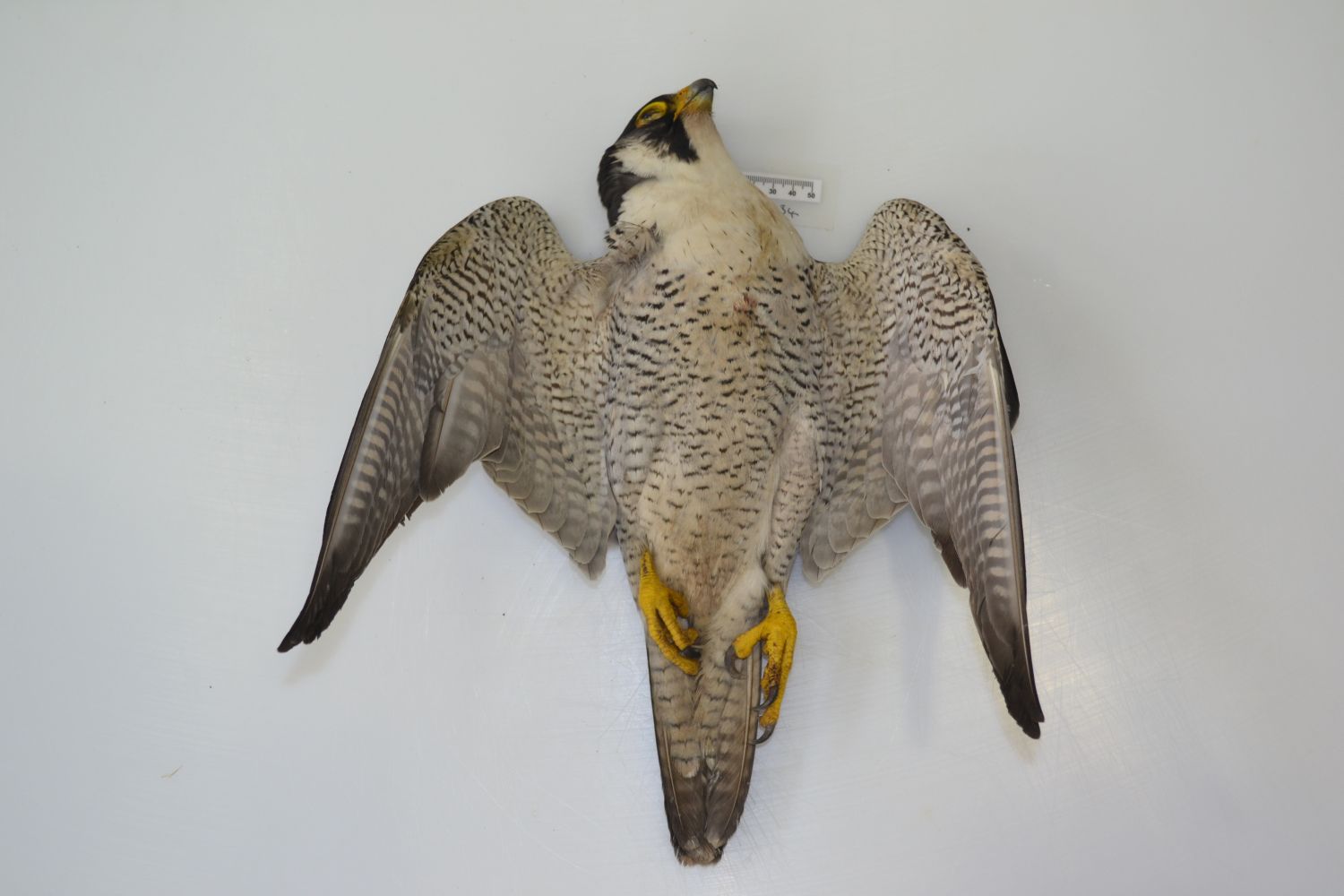
Dr Marc Ruddock from the Northern Ireland Raptor Study Group, who has monitored the peregrines in this area for over a decade along with other volunteers stated: “It is deeply frustrating to think that someone might have gone out of their way to target this bird if the post mortem confirms an illegal act. In 2014 there were only 57 successful breeding peregrine pairs across the whole of Northern Ireland. The loss of a breeding adult has the potential to lead to the desertion of a historical breeding site and widespread persecution could result in serious implications for the viability of the Northern Ireland population of peregrines.”
Dr Ruddock continued “NIRSG volunteers will be increasing surveillance and monitoring at peregrine sites across the country immediately in order to protect nesting sites at this time of year and will report any suspicious activity to the PSNI and would urge the public to be vigilant and also report any suspicious activity or vehicles in the vicinity of any cliffs or quarries immediately to PSNI”.
Wildlife legislation, namely the Wildlife (Northern Ireland) Order 1985 as amended by the Wildlife and Natural Environment (NI) Act 2011, protects all birds of prey from persecution and disturbance during the breeding season by special penalties. Penalties can include fines up to a £5,000 fine per offence and/or a custodial sentence.
Crimes against birds of prey include, but are not limited to, poisoning, trapping and shooting. The setting of poison baits in the open is illegal because it is indiscriminate and has the potential to kill birds of prey as well as other wildlife, pets, livestock and people.
Dr Eimear Rooney, NIRSG representative in the Partnership for Action against Wildlife Crime (PAW), stated: “Disappointingly our fieldworkers detect incidents of raptor crime each year, particularly of peregrine falcons, red kites and buzzards being poisoned or shot. Wildlife crime incidents, particularly where they occur in remote locations, can often go unreported. PAW are working hard to raise awareness both of the law and the protection it affords birds of prey. However, there are clearly still those individuals who are determined to kill birds of prey”.
The NIRSG wishes to send a clear message to these people, persecution of birds of prey will not be tolerated. It does not matter how small each piece of information that members of the public have, it could help the PSNI protect our raptor species and prosecute offenders and would urge people to pass this information either directly to Police on 101 or anonymously to Crimestoppers on 0800 555 111.
The NIRSG are very grateful to the landowners who promptly reported the incident allowing the police to attend the scene very rapidly. Anyone with information on raptor crimes are urged to contact their local PSNI on 101. In March 2016, the PSNI launched Operation Raptor to increase public awareness and encourage reporting of crimes against birds or prey.
________________________________________________________________________________________
• Raptor crimes often comprise illegal shooting, trapping or poisoning events and may occur at any time of the year. It is also illegal to cause disturbance to all raptors or damage their nests or eggs.
• Wildlife legislation, namely the Wildlife (Northern Ireland) Order 1985 as amended by the Wildlife and Natural Environment (NI) Act 2011 protects birds of prey from disturbance and/or destruction by special penalties. Penalties can include a custodial sentence and/or up to a £5,000 fine per offence.
• All raptors are listed on Schedule 1 of the order and there are six raptor species which receive additional protection on Schedule A1 which protects them and their nests from disturbance or destruction at all times of the year. Schedule A1 includes peregrine falcon, red kite, barn owl, golden eagle white-tailed eagle and osprey.
• In the spring of 2014, the PAWNI Raptor Priority Sub-Group produced an information leaflet on raptor crime detection and reporting in Northern Ireland which can be downloaded here: https://www.nirsg.com/wp-content/uploads/2014/02/PAWNI-Raptor-Crime-Leaflet.pdf
• The NIRSG was founded in 1991 and is a voluntary organisation that studies, researches and monitors birds of prey (raptors) across Northern Ireland. We encourage the conservations of raptors and provide information on breeding and wintering raptors to statutory agencies and non-government organisations to ensure effective and practical management and conservation. We raise awareness and profile of all raptor species and inform and assist the police and wildlife agency regarding crimes against raptors. More information can be found at www.nirsg.com
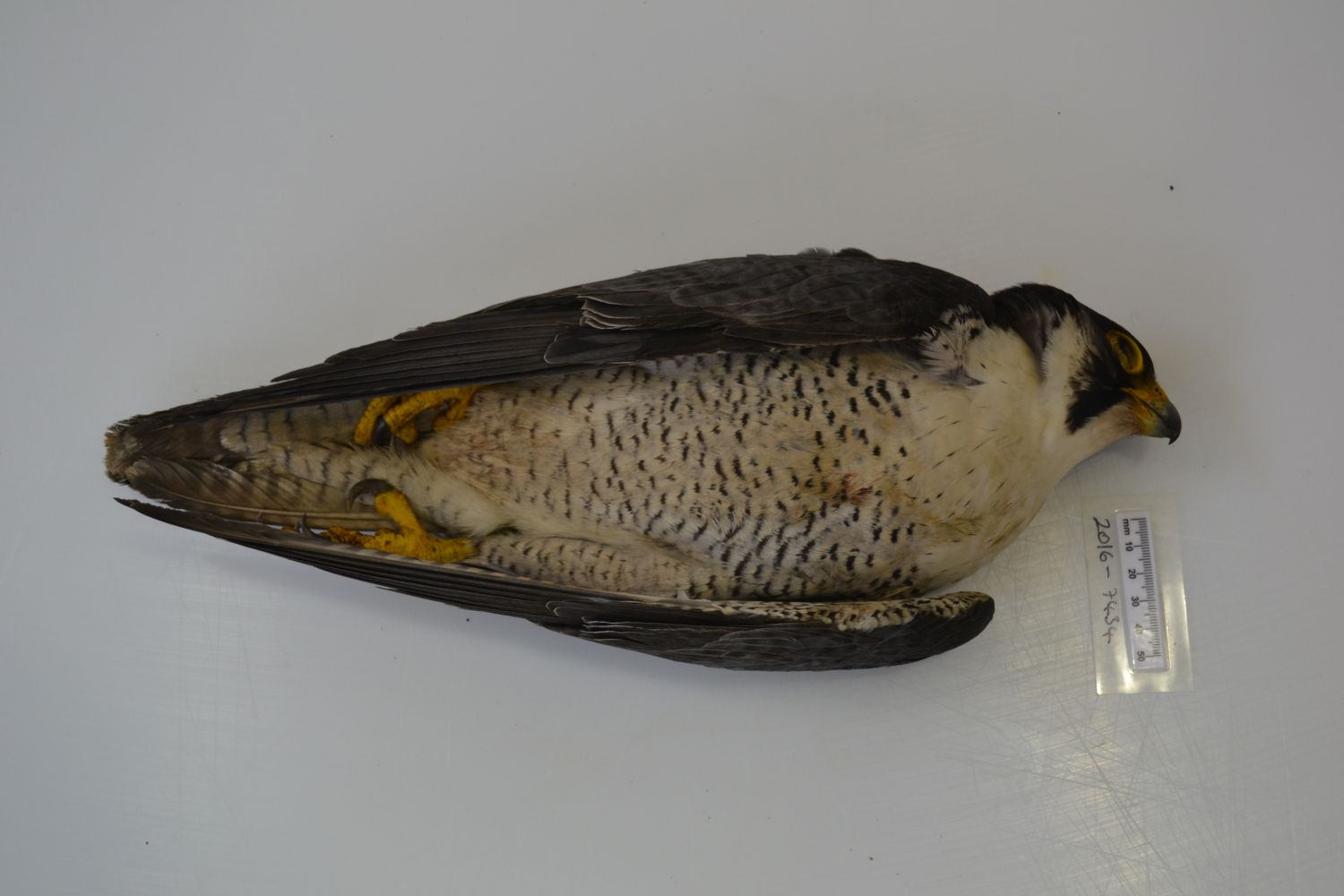
New Report Highlights Raptor Persecution & Poisoning in Northern Ireland
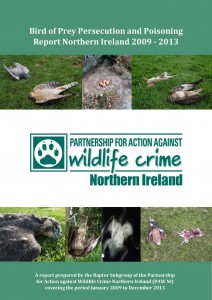 In the five years from 2009 to 2013 there were 30 illegal poisoning or persecution incidents, affecting 33 protected raptors (birds of prey), confirmed in Northern Ireland according to a report published today by the Partnership for Action against Wildlife Crime Northern Ireland (PAWNI).
In the five years from 2009 to 2013 there were 30 illegal poisoning or persecution incidents, affecting 33 protected raptors (birds of prey), confirmed in Northern Ireland according to a report published today by the Partnership for Action against Wildlife Crime Northern Ireland (PAWNI).
The most frequent casualty was the buzzard (19 birds) followed by the recently re-introduced red kite (7 birds) and then peregrine falcons (4 birds). Other raptor species that were recorded included a white-tailed eagle, a golden eagle, sparrowhawk and a merlin.
There were a further 10 confirmed incidents of illegal poisoning of other wildlife or poisoned baits in circumstances where birds of prey were potential victims. Red kites and buzzards, the most frequently recorded victims, are particularly susceptible to poisoned baits as they will feed on carrion routinely.
There were an additional 4 probable raptor crimes (including another white-tailed eagle) and 8 incidents where secondary rodenticide poisoning was recorded.
The report is the result of the work of the Raptor Subgroup of PAWNI facilitating cooperation between the Police Service of Northern Ireland (PSNI), Northern Ireland Environment Agency (NIEA), Northern Ireland Raptor Study Group (NIRSG), Royal Society for Protection of Birds (RSPB) and National Wildlife Crime Unit (NWCU) and analyses the results of post-mortem and toxicology testing carried out via Agri-Food & Biosciences Institute (AFBI) and as reported via the Wildlife Incident Investigation Scheme (WIIS).
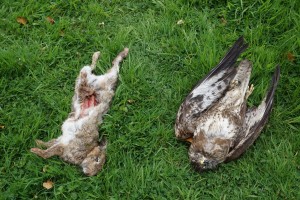 Minister for the Environment and Chair of PAWNI, Mark H. Durkan, welcomed the publication of the report and said “It is a great shame people here are poisoning these wonderful, majestic creatures which brighten up our skies and countryside. I very much condemn the reckless and illegal actions of the minority in our midst who destroy beauty with painful death, leading to the loss of such iconic species. I urge the public to be vigilant and report offenders.”
Minister for the Environment and Chair of PAWNI, Mark H. Durkan, welcomed the publication of the report and said “It is a great shame people here are poisoning these wonderful, majestic creatures which brighten up our skies and countryside. I very much condemn the reckless and illegal actions of the minority in our midst who destroy beauty with painful death, leading to the loss of such iconic species. I urge the public to be vigilant and report offenders.”
Superintendent, Brian Kee, PSNI service lead for rural and wildlife crime, said “This report highlights the continued disregard for public and wildlife safety displayed by a small number of individuals in Northern Ireland. These actions which destroy our native wildlife are illegal and the indiscriminate use of such toxic poisons may affect not only raptors but also children, pets or livestock. I would urge anyone with any information on these types of crimes to report this to the PSNI on 101 or anonymously via Crimestoppers on 0800 555 111 and be assured of PSNI continued efforts in the tackling of wildlife crime”.
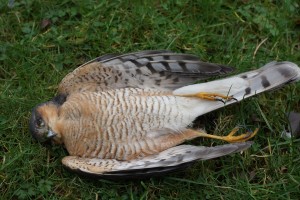 The report lead author, Dr Eimear Rooney (Raptor Officer for NIRSG) said “The overall aim of collating the information in this report was to support government, policy and enforcement agencies to help us all, from authorities to the general public, to understand the scale and distribution of these incidents. I cannot bear to think about the deaths of these individuals, in particular the losses of both golden and white-tailed eagles and red kites, which may have a devastating impact on the survival of these populations. Working with a range of experts via the PAWNI Raptor Subgroup has allowed us to share our data and experience and produce this robust assessment which we aim to update annually.”
The report lead author, Dr Eimear Rooney (Raptor Officer for NIRSG) said “The overall aim of collating the information in this report was to support government, policy and enforcement agencies to help us all, from authorities to the general public, to understand the scale and distribution of these incidents. I cannot bear to think about the deaths of these individuals, in particular the losses of both golden and white-tailed eagles and red kites, which may have a devastating impact on the survival of these populations. Working with a range of experts via the PAWNI Raptor Subgroup has allowed us to share our data and experience and produce this robust assessment which we aim to update annually.”
RSPB, NIRSG and NWCU have further welcomed the publication of the report as another step towards identifying the national frequency, timing and locations of these crimes in Northern Ireland. The publication of this report demonstrates the value of collaborative working by these organisations to help monitor and record raptor persecution in a strategic effort to identify “hot-spot” areas and help tackle the issues as well as increase public awareness and education.
PAWNI Raptor Persecution & Poisoning Report 2009-2013 FINAL (PDF)
To Download Press Image 1 Click Here
To Download Press Image 2 Click Here
To Download Press Image 3 Click Here
Notes to editor:
- Raptor Persecution is one of the UK government’s top six Wildlife Crime Priorities. Raptor crimes typically comprise illegal shooting, trapping or poisoning events and may occur at any time of the year. It is also illegal to cause disturbance to all breeding raptors or damage their nests or eggs.
- The Raptor Priority Subgroup comprises Police Service of Northern Ireland (PSNI); Northern Ireland Environment Agency (NIEA); National Wildlife Crime Unit (NWCU); Northern Ireland Raptor Study Group (NIRSG) and the Royal Society for Protection of Birds (RSPB). The Raptor Priority Sub-Group is acting on behalf of and reports back to the main PAWNI group currently chaired by the Environment Minister, Mark H. Durkan.
- Wildlife legislation, namely the Wildlife (Northern Ireland) Order 1985 as amended by the Wildlife and Natural Environment (NI) Act 2011 protects birds of prey from disturbance and/or destruction by special penalties. Penalties can include a custodial sentence and/or up to a £5,000 fine per offence.
- All raptors are listed on Schedule 1 of the order and there are six raptor species which receive additional protection on Schedule A1 which protects them and their nests from disturbance or destruction at all times of the year. Schedule A1 includes peregrine falcon, red kite, barn owl, golden eagle white-tailed eagle and osprey.
- The Campaign for Responsible Rodenticide Use (CRRU) aims to promote best practice so that rat poisons (rodenticides) in particular should not get into the wildlife food chain where it harms owls, kites and other birds of prey. More information on this can be found at www.thinkwildlife.org
- A leaflet outlining the protocol for reporting raptor crimes was previously produced by the Raptor Subgroup and is available for download at the following link: https://www.nirsg.com/wp-content/uploads/2014/02/PAWNI-Raptor-Crime-Leaflet.pdf
- More information on the Wildlife Incident Investigation Scheme (WIIS) is available at: http://www.pesticides.gov.uk/guidance/industries/pesticides/topics/reducing-environmental-impact/wildlife
- For additional enquiries please contact Dr Eimear Rooney; raptorofficerni@gmail.com; 07743068931.
Buzzard Mobbing Behaviour – June 2015
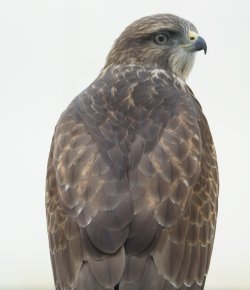 During the breeding season many animals defend their territories and breeding sites from potential danger and birds of prey are no exception. Birds of prey will ‘alarm call’ at any perceived threat that comes too close to their nest site. On rarer occasions they may dive at the threat if it persists, and even make contact with it. This is a natural response which can be observed by many different types of wildlife. For example, many of us are familiar with being ‘dive-bombed’ by gulls.
During the breeding season many animals defend their territories and breeding sites from potential danger and birds of prey are no exception. Birds of prey will ‘alarm call’ at any perceived threat that comes too close to their nest site. On rarer occasions they may dive at the threat if it persists, and even make contact with it. This is a natural response which can be observed by many different types of wildlife. For example, many of us are familiar with being ‘dive-bombed’ by gulls.
Alarm-calling is usually enough to deter the threat, but for those of us who are not familiar with the sounds of birds of prey may not realise what is happening and continue merrily on our way, getting closer and closer to the nest. It is rare for a bird to actually make contact but it does happen and NIRSG get a few reports every year at sites where a bird is repeatedly disturbed and aggressive mobbing or ‘attacks’ may occur.
We can provide information if required and ask people to stay clear of the area for a few weeks until the height of the breeding season is over. However, this year, the media have picked up on a small number of nest sites in particular where buzzards are particularly aggressive and are making contact with people who are oblivious to the early warning signs that they are approaching an active nest site. In these cases the buzzards have unfortunately nested very close to active pathways or roads and as a result are being frequently disturbed each day. The buzzard nesting season typically extends from March through to July or early August each year but young are only typically in their nests between May and late June or early July.
‘Attacks’ or mobbing behaviours may increase in ferocity throughout the season as a learned behaviour which you get with any bird – if it makes contact and it is successful in making the threat leave then it learns to perhaps do this quicker and harder next time so the threat will leave quicker. The more birds are disturbed the more aggressive they may become, and this goes for most nesting birds, including gulls, terns and waders. Every individual bird may be totally different in their response to disturbance and the majority will perhaps alarm call and then fly high overhead calling continuously and it is important for people to try and understand what these behaviours and calls might mean and minimise such negative impacts on our wildlife.
Birds of prey in Northern Ireland are protected under the Wildlife (Northern Ireland) Order 1985, as amended by the Wildlife & Natural Environment Act (NI) 2011 and it is illegal to disturb them at, in, on or near their nests. Such offences may be subject to a custodial sentence and/or £5,000 fine per offence. There is a reason for this. Birds of prey sit at the top of their food chain and thus are very sensitive to changes in the environment. This leaves them as very vulnerable species whose populations are unstable. The success of their breeding attempts can be affected by disturbance, with eggs and chicks at risk from chilling, predation and starvation when the adults are responding to perceived threats. One or two successive poor breeding years is enough to cause radical declines in some species.
What can you do?
If you are aware of a bird of prey calling when you are out an about, take a few seconds to think, am I disturbing this bird and could it be calling at me? If so, please find an alternative route for the next number of weeks. We would therefore advocate avoidance as the means to prevent such disturbance to the buzzards and their nests and thereby also avoid any associated mobbing and defensive behaviours.
Buzzard chicks are generally large enough to be left alone by the adults by mid-late June and they leave the nest around the first week of July. Over this time the defensive behaviour of the adults will decrease and the mobbing behaviour will not then typically occur. These birds are only protecting their young.
You can let NIRSG know whereabouts you are witnessing this protective behaviour and we can take action by putting up signage asking people to find an alternative route until the end of the breeding season (email: info@nirsg.com or raptorofficerni@gmail.com).
Finally, if you witness any bird of prey being antagonised or disturbed you can call PSNI on ‘101’ or anonymously at Crimestoppers ‘0800 555 111’. This disturbance may, after all, be a crime, and should be reported.
Buzzard Cam Launched in Co. Down – interactive monitoring of buzzard nests by Northern Ireland Raptor Study Group at National Trust property Mount Stewart, on the Ards Peninsula.
 The Northern Ireland Raptor Study Group (NIRSG) in collaboration with the National Trust has this year embarked on an initiative to remotely monitor activity at buzzard nests and facilitate a unique raptor interactive experience with the wider public.
The Northern Ireland Raptor Study Group (NIRSG) in collaboration with the National Trust has this year embarked on an initiative to remotely monitor activity at buzzard nests and facilitate a unique raptor interactive experience with the wider public.
Teams of raptor study group volunteers have been closely monitoring all raptors across Northern Ireland but two special buzzard nests on Mount Stewart estate on the Ards peninsula have been getting close attention over recent weeks, one of which contained three eggs and the second contained an exceptional six eggs and one recently hatched chick, meaning that seven eggs were laid.
These two buzzard nests are currently being monitored for research purposes by remote cameras, under special licences and permits from the Northern Ireland Environment Agency (NIEA) and Forest Service NI, at the stunning National Trust property at Mount Stewart, Co. Down.
Footage from one of these nests which had the three eggs is being streamed to the wider public via the NIRSG web-page (www.nirsg.com) and footage is also being relayed to TV screens at Mount Stewart where people can also watch the progress of the nest over the summer.
Dr Marc Ruddock, Project Manager for the NIRSG said; “We were hugely grateful to have received funding from the Challenge Fund in 2015 to visit schools across Northern Ireland and also to build this remote monitoring camera system. This system took many months to build and we now have a remotely powered camera recording high quality footage of the buzzard nests in Mount Stewart. Dr Ruddock continued “We would like to thank Andrew Murray and Stuart Ogg, the experts behind the construction of the system and also the National Trust for hosting the camera and our Raptor Officer for working to locate these nests. Dr Ruddock concluded this team project provides a fantastic blend of wildlife knowledge, raptor understanding, technology, field survey effort and with the essential support of land managers to provide a truly unique interactive experience for our raptor workers and also the public”.
Mr Andrew Upton, Coast and Countryside Manager for National Trust for Strangford Lough & the Ards Peninsula said “We are delighted to have been able to host this type of project at one of our properties and we will have footage from the camera system relayed to screens at Mount Stewart to allow our visitors to see what happens first hand in the buzzard nest and we look forward to people coming to see this species on the estate in such a novel and interactive way whilst causing no disturbance to these special birds”.
Dr Eimear Rooney, the NIRSG Raptor Officer, who completed her PhD on buzzards in Northern Ireland said “I am excited to be able to get a 24/7 insight into the life of a buzzard family. This is a species which is far too often killed illegally in Northern Ireland, particularly by poisoning, and this type of research and engagement with people is really important for us all to understand the value of raptors (birds of prey) and their behaviour and lifestyles within our eco-system”. Dr Rooney continued “Our volunteers work tirelessly in monitoring many birds of prey across Northern Ireland and we wouldn’t find interesting nests such as this without the hard work of the volunteers. If anyone would like to help you can report your raptor sightings at the NIRSG webpage or why not follow us via Facebook to get updates about our work and in particular to receive updates of these nests”.
Carol Forster from Northern Ireland Environment Link (NIEL) which administered the Challenge Fund monies for the camera and education projects to the NIRSG said “It’s really wonderful to see Challenge Fund money used for such a positive project delivering clear multiple benefits – benefits for wildlife, benefits for society in getting volunteers involved in nature, and benefits for government in terms of monitoring and data gathering”.
Cathy Smyth ornithologist at Northern Ireland Environment Agency said “NIEA is delighted to work closely with the NIRSG and this interactive project, giving visitors a chance to get up close to a buzzard nest and affording them the opportunity to develop an interest in these fantastic birds”.
Press Release – Raptor Crime Leaflet Launched
8th March 2014
On the 8th March, at the annual Northern Ireland Raptor Study Group conference at Oxford Island Nature Reserve a new bird of prey (raptor) leaflet was launched by the Partnership for Action Against Wildlife Crime (PAW) Northern Ireland encouraging members of the public to record and report suspected cases of raptor crime directly to the Police Service of Northern Ireland (PSNI).
In living memory during the 1960s, Northern Ireland lost our last breeding golden eagles, at Fairhead in Co. Antrim. It is believed persecution, habitat loss, negative human attitudes and disturbance all played a key part in the loss of some of our breeding raptor species over the past 200 years. Amongst others we lost breeding golden eagles, white-tailed eagles, ospreys and red kites whilst buzzards were almost totally extinct.
Over time some of these species have recovered naturally or via re-introduction programmes and are hailed as conservation successes. However, each year illegal incidents of shooting or poisoning are recorded and undoubtedly the incidents detected may only be the tip of the iceberg.
Dr Eimear Rooney, recently appointed as Raptor Officer, with NIRSG, stated: “Disappointingly our volunteers detect incidents of raptor crime each year, particularly of peregrines falcons and buzzards being poisoned or shot. Some of our rarer species, such as the hen harrier, are still threatened by habitat destruction with several known nest sites having been burnt out during uncontrolled heather fires in recent years. It is important that our volunteers and the wider public learn how to detect and report raptor crimes so we can minimise the effects of illegal activities on their populations”.
Dr Jon Lees, NIEA Wildlife Officer said, “PAW NI aims to increase public awareness of crimes against our wildlife, to increase reporting of suspected wildlife crimes to the PSNI and to deter offenders in the first place. The loss of primary predators such as birds of prey from our ecosystems has serious consequences for Northern Ireland’s ecosystem, which ultimately impact a wide range of species. The barbaric and cruel methods used by the offenders to trap, poison or kill these birds would offend the majority of Northern Ireland’s citizens and these criminals can often put human lives at risk by indiscriminate use of highly toxic chemicals. The PAW NI appeal to the wider public to report these types of crimes, as they would any other crime, to help the PSNI tackle these issues. Raptor crime, or indeed any wildlife crime, simply should not be tolerated”.
Wildlife Officer for the Police Service of Northern Ireland, Emma Meredith said: “Wildlife crime incidents, particularly where they occur in remote locations, can often go unreported. I hope the information leaflet will continue to encourage members of the public to provide valuable information to the police, and help us continue to build a more accurate picture of the extent of raptor crime on our native birds in a tangible way”.
Emma, continued; “It does not matter how small each piece of information that members of the public have, it could help the PSNI protect our raptor species. I would urge people to pass this information either directly to Police on 101 or anonymously to Crimestoppers on 0800 555 111”.
“The PSNI have welcomed the stream of wildlife crime initiatives emanating from the Partnership for Action against Wildlife Crime sub-groups including deer poaching, fish poaching and now raptor crimes; the collective agreement and support by all these groups, representing such a diverse range of outdoor activities, hobbies and sports, is humbling to see in action as we are united against wildlife crime”
Often raptors in Northern Ireland are poisoned by highly toxic, illegally used substances such as carbofuran or alphachloralose, which are laid out on meat baits, such as dead rabbits or even sausages, in the open countryside. These baits are typically left uncovered and can easily be discovered not only by wildlife but also children or be eaten by pet dogs or cats with fatal consequences. Numerous incidents of pets being poisoned are also recorded every year in Northern Ireland. These types of activities should not be tolerated and present a serious risk to human health and the perpetrators simply do not seem to have a conscience in this regard.
Bob Elliot and Adam McClure, with RSPB, both reinforced this message and they stated: “This issue is of critical importance to our native raptors and notably to the re-introduced red kite population. Over the last 12 months we have lost four red kites to illegal poisoning including the deaths of adult birds but also red kite chicks still at the nest. We must deploy every available tool in the ongoing fight against wildlife crime and it’s vital that everyone is encouraged to report these crimes to the police.”
This leaflet is aimed to disseminate information, and particularly improve awareness, detection and reporting of raptor crime throughout Northern Ireland. Crime prevention through education and awareness raising plays a vital role in reducing criminality and anyone with information on raptor crimes are urged to contact their local PSNI.
- Photo of the leaflet launch on 8th March, with delegates at the annual raptor conference, Oxford Island, Lough Neagh
- Dead sparrowhawk
- Dead Northern Ireland Red Kite and baited rabbit
- Leaflet Page 1
- Leaflet Page 2
